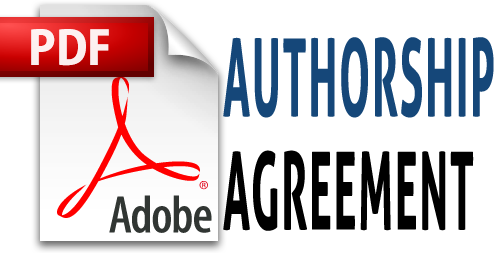BLENDED LEARNING FOR VOCATIONAL HIGH SCHOOL STUDENTS
 Oktovianus Nau Lalian(1*),
Eveline Siregar(2),
Murni Winarsih(3)
Oktovianus Nau Lalian(1*),
Eveline Siregar(2),
Murni Winarsih(3)
(1) Pascasarjana Universitas Negeri Jakarta
(2) Pascasarjana Universitas Negeri Jakarta
(3) Pascasarjana Universitas Negeri Jakarta
(*) Corresponding Author
 Abstract viewed : 2868
|
Abstract viewed : 2868
|  PDF downloaded : 467
PDF downloaded : 467
Abstract
The aimed of this study was to develop a blended learning for vocational students of light vehicle power expertise program in the learning process as a learning strategy to overcome the problem of lack of face-to-face time in class. The procedure for developing blended learning used was PEDATI model (learning, deepening, applying, measuring) as design instructional for blended learning. Data collection techniques used were observation, interview, and questionnaires. Data analysis techniques used was descriptive qualitative. The development of blended learning through the PEDATI model will be very effective for the achievement of learning objectives optimally and efficiency in learning time in class.
Abstrak
Tujuan penelitian ini adalah mengembangkan blended learning bagi siswa SMK program keahlian tenaga kendaraan ringan dalam proses pembelajaran sebagai suatu strategi pembelajaran untuk mengatasi masalah kekurangan waktu tatap muka di kelas. Prosedur pengembangan blended learning dengan model PEDATI (Pelajari, Dalami, Terapkan, dan Evaluasi) sebagai model desain pembelajaran blended learning. Teknik pengumpulan data melalui observasi, wawancara, dan kuesioner. Teknik analisis data yang digunakan adalah deskriptif kualitatif. Pengembangan blended learning dengan prosedur PEDATI akan sangat efektif untuk pencapaian tujuan pembelajaran secara optimal dan efisiensi waktu pembelajaran di kelas.
Keywords
References
Aeni, N., Prihatin, T., & Utanto, Y. (2017). Pengembangan Model Blended Learning Berbasis Masalah pada Mata Pelajaran Sistem Komputer. Innovative Journal of Curriculum and Educational Technology, 6(2), 27–38. https://doi.org/10.15294/ijcet.v6i2.15642
Akkoyunlu, B., & Soylu, M. Y. (2008). A Study of Student ’ s Perceptions in a Blended Learning Environment Based on Different Learning Styles. Journal of Educational Technology & Society, 11(1), 183–193.
Arham, U. U., & Dwiningsih, K. (2016). Keefektifan Multimedia Interaktif Berbasis Blended Learning Untuk Meningkatkan Hasil Belajar Siswa. Kwangsan-Jurnal Teknologi Pendidikan, 4(2), 111. https://doi.org/10.31800/jtp.kw.v4n2.p111--118
Banggur, M. D. V., Situmorang, R., & Rusmono. (2018). Pengembangan Pembelajaran Berbasis Blended Learning Pada Mata Pelajaran Etimologi Multimedia. Jurnal Teknologi Pendidikan, 20(2), 152–165.
Branch, R. M., & Dousay, T. A. (2015). Survey of Instructional Development Models (Fifth Edit). Association for Educational Communications and Technology.
Butt, A. (2014). Student Views on the Use of A Flipped Classroom Approach: Evidence from Australia. Business Education & Accreditation, 6(1), 33–44.
Chaeruman, U. A. (2017). Pedati Model Desain Sistem Pembelajaran Blended. Kementerian Riset, Teknologi, dan Pendidikan Tinggi.
Cole, J. E., & Kritzer, J. B. (2009). Strategies for Success: Teaching an Online Course. Rural Special Education Quarterly, 28(4), 36–40. https://doi.org/10.1177/875687050902800406
Darmawan, D. (2015). Teknologi Pembelajaran. PT. Remaja Rosdakarya.
Garrison, D. R., & Vaughan, N. D. (2017). Blended Learning in Hugher Education Framework, Principles and Giudelines. European Journal of Education Studies, 3(5), 29–40. https://doi.org/10.5281/zenodo.814302
Graham, C. R., Borup, J., Short, C. R., & Archambault, L. (2019). K-12 blended teaching: A guide to personalized learning and online integration. http://edtechbooks.org/k12blended
Husain, C. (2014). Pemanfaatan Teknologi Informasi dan Komunikasi dalam Pembelajaran di SMA Muhammadiyah Tarakan. Jurnal Kebijakan Dan Pengembangan Pendidikan, 2(2), 184–192.
Koesnandar, A. (2020). Pengembangan Model Pembelajaran Inovatif Berbasis Teknologi Informasi dan Komunikasi ( TIK ) Sesuai Kurikulum 2013. Kwangsa-Jurnal Teknologi Pendidikan, 08(01), 33–61.
Mohanty, A., & Parida, D. (2016). Exploring the Efficacy & Suitability of Flipped Classroom Instruction at School Level in India: A Pilot Study. Creative Education, 07(05), 768–776. https://doi.org/10.4236/ce.2016.75079
Mukarom, Z., & Rusdiana, A. (2016). Komunikasi dan Teknologi Informasi Pendidikan: Filosifi, Konsep, dan Aplikasi. Pustaka Setia.
Seels, B. B., & Richey, R. C. (1994). Teknologi Pembelajaran: Defenisi dan Kawasannya (terjemahan oleh Dewi S. Prawiradilaga, Raphael
Rahardja, dan Yusufhadi Miarso). Unit Penerbitan Universitas Negeri Jakarta.
Staker, B. H., & Horn, M. B. (2012). Classifying K – 12 Blended Learning. Inno Sight Institute.
Wallace, A. (2014). Social Learning Platforms and the Flipped Classroom. International Journal of Information and Education Technology, 4(4), 293–296. https://doi.org/10.7763/IJIET.2014.V4.416
Refbacks
- There are currently no refbacks.
Copyright (c) 2021 Oktovianus Nau Lalian, Eveline Siregar, Murni Winarsih

This work is licensed under a Creative Commons Attribution-NonCommercial 4.0 International License.
Kwangsan Indexed By
Kwangsan: Jurnal Teknologi Pendidikan diterbitkan oleh Balai Besar Guru Penggerak (BBGP) Prov. Jawa Timur.
Kementerian Pendidikan dan Kebudayaan
Alamat Redaksi:
Jl. Mangkurejo, Ds. Kwangsan, Sedati - Sidoarjo.
Telp 0318911373 Fax. 0318911392
Email: jurnal.kwangsan@kemdikbud.go.id & jurnalkwangsan@dikbud.belajar.id






























